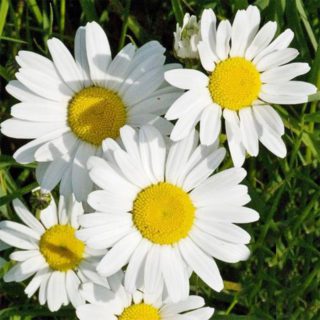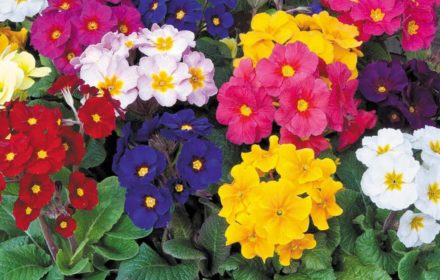How to Sow Snow Gypsophila (Baby’s Breath) Seeds
Snow Gypsophila, commonly known as Baby’s Breath, is a charming and versatile hardy annual that originates from Eurasia, Africa, and Australia. Known for its delicate foliage and showy white button-like flowers with pale yellow centers, this plant is a favourite among florists and gardeners alike. With a maximum height of 18 inches, snow gypsophila blooms throughout most of the summer and is ideal for borders, containers, or as a filler plant in flower arrangements. Its ability to spread and regrow with selective harvesting makes it a great addition to any UK garden.
When to Sow Snow Gypsophila Seeds
- Indoor Sowing: Start seeds indoors from late winter to early spring (February to April) for an early display of flowers. This method allows for controlled growing conditions and earlier blooms.
- Outdoor Sowing: Direct sow outdoors in spring (April to May) once the risk of frost has passed, and the ground is warm and workable.
Step-by-Step Guide to Sowing Snow Gypsophila Seeds Indoors
- Prepare Containers: Use seed trays, pots, or small containers filled with high-quality, well-draining seed compost. Ensure the compost is fine and not clumpy for optimal seed contact.
- Sowing the Seeds: Sow the seeds thinly on the surface of the compost and cover lightly with a thin layer of compost or soil, no deeper than 1/8 inch (3 mm). Snow gypsophila seeds require light to germinate, so avoid burying them too deeply.
- Germination Conditions: Place the seed trays in a warm, bright area with a temperature of at least 15°C (59°F). Cover the trays with a propagator lid or clear plastic wrap to retain moisture and warmth. Keep the soil consistently moist but not waterlogged.
- Germination Time: Seeds typically germinate within 14 to 21 days. Remove the cover once seedlings appear to allow for better airflow and prevent damping-off disease.
- Transplanting Seedlings: Once the seedlings are large enough to handle and have developed their first true leaves, transplant them into individual pots or directly into the garden. Harden them off by placing them outdoors during the day for a week before planting.
Direct Sowing Snow Gypsophila Seeds Outdoors
- Soil Preparation: Choose a sunny or partially shaded spot in your garden with well-drained soil. Use a rake to break up clumps and create a smooth, workable surface. Adding a small amount of compost can improve soil fertility.
- Sowing the Seeds: Sow the seeds directly into the soil at a depth of 1/8 inch (3 mm) and lightly rake over to cover them. Space rows about 12 inches apart to provide enough room for spreading.
- Watering: Gently water the area to settle the soil. Keep the soil consistently moist during the germination period but avoid overwatering.
- Thinning Seedlings: Once seedlings are established, thin them to a spacing of about 6-12 inches apart. This ensures adequate airflow and prevents overcrowding.
Caring for Snow Gypsophila Plants
- Watering: Water regularly during dry periods, especially when the plants are young. Established plants are more drought-tolerant but will benefit from consistent moisture for optimal blooming.
- Sunlight: Snow gypsophila thrives in full sun but can tolerate partial shade. Aim for at least 6 hours of sunlight daily for the best results.
- Feeding: Although not heavy feeders, applying a light, balanced fertiliser during the growing season can promote healthy growth and abundant flowering.
- Selective Harvesting: If growing snow gypsophila for cut flowers, selectively harvest stems to allow the plant time to regrow. This will ensure a consistent supply throughout the summer.
- Overwintering: While snow gypsophila is a hardy annual, it may self-seed if left undisturbed. Allow some flowers to go to seed at the end of the season for natural regeneration the following year.
Common Questions About Growing Snow Gypsophila in the UK
- Can snow gypsophila grow in containers? Yes, snow gypsophila is well-suited for pots and containers, provided they have good drainage and are placed in a sunny location.
- How tall does snow gypsophila grow? Snow gypsophila typically reaches a height of around 18 inches (45 cm), making it ideal for borders or as a filler plant in mixed displays.
- How do I prevent damping-off disease during germination? Ensure proper airflow around the seedlings and avoid overwatering. Removing the propagator lid or plastic covering once seedlings emerge can also help.
- Is snow gypsophila drought-tolerant? Yes, once established, snow gypsophila is relatively drought-tolerant, though regular watering will promote better flowering.
By following these steps, you can enjoy a beautiful display of snow gypsophila, adding delicate charm to your garden or flower arrangements. Whether grown in borders, containers, or among bedding plants, this versatile flower is a must-have for UK gardeners.



















